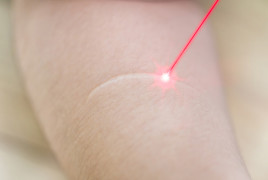Eczema types: Atopic dermatitis causes
What causes atopic dermatitis?
Dermatologist Jenny E. Murase, MD, FAAD, explains why we get atopic dermatitis and the benefits of treatment, while World Champion softball pitcher Jennie Finch shares her personal experience.
What causes atopic dermatitis?
This is a complex disease. Researchers have discovered that the following likely play a role in causing atopic dermatitis (AD):
Family history of AD, food allergies, asthma, or hay fever
Immune system
Where you live
What you’re exposed to in everyday life, such as stress, pollution, and tobacco smoke
Some people are more susceptible to AD
African American and Asian American children tend to develop atopic dermatitis more often than white children.

Here’s what the findings from these studies show:
AD runs in families: Researchers have found you are more likely to develop AD if blood relatives have (or had) AD, food allergies, asthma, or hay fever. These findings mean that genes are involved in causing AD.
In fact, researchers have found that certain genes affect a part of your skin called the epidermal barrier. This is the outer layer of skin that protects us from losing too much water and prevents germs from getting in through your skin. AD causes gaps in this outer layer, which seem to be inherited just like your eye color.
Researchers have also found that even if you have genes that increase your risk of developing AD, you may not develop AD. What you’re exposed to also affects whether you develop AD.
Where you live: Climate cannot cause AD. However, when a child inherits genes for AD, climate can be a tipping point. Children who have a higher risk of developing AD tend get it more often when they live in a:
High income country, such as the United States
City
Place that’s cold and damp at least part of the year
Mountainous area with low temperatures for at least part of the year
The more traits an area has, the greater the risk of developing AD. For example, if a child has a risk of developing AD and moves from Jamaica to London, the child is more likely to develop AD after moving to London. This large city is often cold and damp.
Living in a warm, humid area seems to decrease the risk of developing AD. Children who live in a rural area also seem to have a lower risk.
Climate may also affect how well treatment for AD works
If you live in a cold and damp climate, treatment for AD may not work as well or work for a while and then stop working.

What you’re exposed to frequently: Like climate, what you’re exposed cannot cause AD. However, if your genes increase your risk of developing AD, exposure to substances that irritate your skin or cause an allergic reaction may lead to AD.
This list of substances is long. It includes tobacco smoke, fragrance found in skin care products, laundry detergent, pollution, and wool clothing.
How your immune system works: AD is also caused in part by your immune system.
Researchers have discovered that in people with AD, the immune system overreacts. This makes the immune system very sensitive. It may react to everyday things, such as pollen and pollution, which leads to flare-ups.
Who gets AD?
AD is common in children. As many as 25% of children in the United States may have AD. Most develop AD by their 5th birthday. Adults also develop AD, but this is less common. Although rare, AD can even start after 60 years of age.
Many children who have AD see the condition disappear by the time they reach 12 years of age. AD can also be a lifelong condition. It’s estimated that 2% to 10% of adults have AD.
Race also plays a role in who gets AD. Asians and blacks are more likely to develop AD than whites. In the United States, African American and Asian American children are more likely to get AD than white children.
If you suspect that you or your child may have AD, it’s important to get diagnosed. Treatment can prevent AD from worsening. Find out how this condition is diagnosed and treated at: Atopic dermatitis: Treatment
Image: Getty Images
References American Academy of Dermatology. AAD Fact Sheet: Eczema. Revised December 2019. Eichenfield LF, Tom WL, et al. “Guidelines of care for the management of atopic dermatitis Section 1. Diagnosis and assessment of atopic dermatitis.” J Am Acad Dermatol. 2014;70:338-51. Kaufman BP, Guttman-Yassky E, et al. “Atopic dermatitis in diverse racial and ethnic groups: Variations in epidemiology, genetics, clinical presentation and treatment.” Exp Dermatol. 2018;27(4):340-57. McAleer MA, O’Regan GM, et al. “Atopic dermatitis.” In: Bolognia JL, et al. Dermatology. (fourth edition). Elsevier, China, 2018: 208:27. Torjesen I. “Atopic dermatitis in skin of color.” Dermatol Times. Dec. 12, 2019. Last accessed Jan 31, 2019.
 Think sun protection during Skin Cancer Awareness Month
Think sun protection during Skin Cancer Awareness Month
 How to care for your skin if you have lupus
How to care for your skin if you have lupus
 Practice Safe Sun
Practice Safe Sun
 Sunscreen FAQs
Sunscreen FAQs
 Fade dark spots
Fade dark spots
 Hidradenitis suppurativa
Hidradenitis suppurativa
 Laser hair removal
Laser hair removal
 Scar treatment
Scar treatment
 Botox
Botox
 Kids' camp - Camp Discovery
Kids' camp - Camp Discovery
 Dermatologist-approved lesson plans, activities you can use
Dermatologist-approved lesson plans, activities you can use
 Find a Dermatologist
Find a Dermatologist
 Why choose a board-certified dermatologist?
Why choose a board-certified dermatologist?